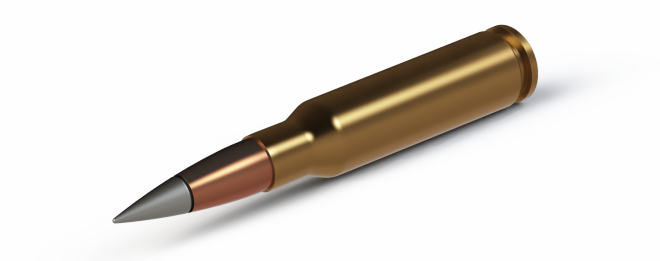How can one balance the trade-offs inherent in ammunition design to create a true one-caliber infantry weapon system that is both effective and lightweight? This is a question I’ve been exploring for close to a decade, and writing about for over four years. The question is extremely compelling to me because so much is demanded of the answer: Unlike with two-caliber systems, all the needs of the infantry must be met with one single caliber configuration, so each and every dimension must be carefully measured to allow the lowest possible weight, which is arguably the most important single characteristic of small arms ammunition.
I say that, because fundamentally the infantryman can only carry so much. Other ammunition characteristics like lethality are of course themselves important, but there is a non-negotiable limit to how much mass of equipment a soldier can carry, which is a tremendous pressure on the design ammunition to remain small and lightweight.
For single-caliber – also called a “universal” or “general purpose” caliber – systems, this forces hard questions about exactly how much effectiveness is necessary, and how much weight and bulk of ammunition is too much. A system that results in a fifty-kilogram weight increase to the infantry platoon will result in substantial penalties in the other kinds of equipment that the platoon can carry, even if in trade the new caliber is several times more effective than the previous configuration. On the other hand, a new system that reduces the weight in the platoon by fifty kilograms but that in doing so dramatically reduces the effectiveness of small arms calibers may not be satisfactory, either – even if other weapons can be carried due to the weight savings – as it is the carbines, rifles, and machine guns of the platoon that form the foundation of its combat power.
In light of this, I’ve created a calculator to help manage the weight of new ammunition. You can download the calculator here, which allows the user to easily calculate a weight limit for a new caliber, given the current US Army Rifle Platoon structure and weapon employment, using a few inputs:
– The ammunition capacity per magazine
– The weight of a single magazine
– The weight of a single belt link
Along with how much you want to reduce the weight of the infantry platoon, or how much additional weight you are willing to accept, as a decimal of the existing load. For example, if you want to reduce the platoon’s ammunition load by 10%, input 0.90 into the cell to the right of the one that reads “Weight Modifier”; or if you will accept a weight increase of 10%, input 1.10.
The default inputs represent a medium-sized polymer-cased telescoped ammunition design using 25 round polymer magazines, but these can be replaced with any numbers the user wants, allowing one to calculate values for conventional- and lightweight-cased ammunition alike, as well as magazines and belt links of any material.
The spreadsheet uses figures derived from my articles An Analysis of the Soldier’s Load with 6.5mm Cased Telescoped Ammunition (Parts 1 and 2), which itself relies heavily on the paper The Modern Warrior’s Combat Load. Like my articles, the spreadsheet accounts for the weight of ammunition, magazines, and belt links, but not pouches, rifles, optics, etc. The calculator also does not support different arrangements than the current structure of the US Army Rifle Platoon. So it should not be used for systems that use a different number of belt-fed or magazine fed weapons than the US Army’s rifle platoon.
EDIT: I altered the spreadsheet to allow users to adjust how much ammunition (in either belts or mags) is carried by the platoon.
As a final note, it’s true that a one-caliber system is not the only possibility, and indeed may be undesirable. A two-caliber system would be significantly less risky than a one-caliber system, as the pressure from competing requirements would be far lower when spread across two different ammunition types than when confined to only one. However, a two-caliber system would likely be more expensive initially, and if poor choices are made during the development of ammunition, it could also be unsatisfactory, or morph into a 3-caliber system.
 Your Privacy Choices
Your Privacy Choices
